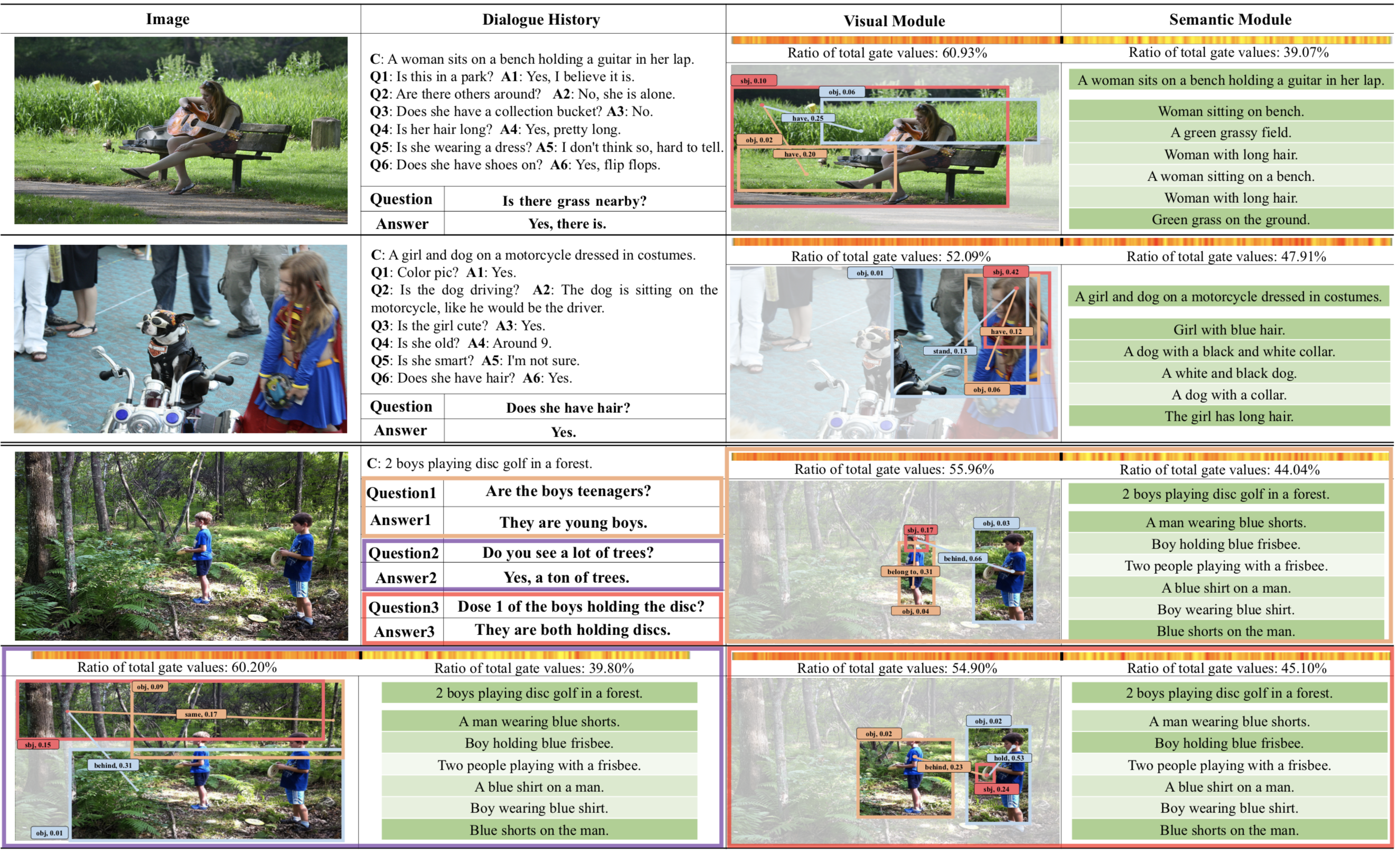Example results from the VisDial v1.0 validation dataset.
This is a PyTorch implementation for DualVD: An Adaptive Dual Encoding Model for Deep Visual Understanding in Visual Dialogue, AAAI2020.
If you use this code in your research, please consider citing:
@inproceedings{jiang2019dualvd,
title = {DualVD: An Adaptive Dual Encoding Model for Deep Visual Understanding in Visual Dialogue},
author = {Jiang, Xiaoze and Yu, Jing and Qin, Zengchang and Zhuang, Yingying and Zhang, Xingxing and Hu, Yue and Wu, Qi},
year = {2020},
pages = {11125--11132},
booktitle = {Proceedings of the Thirty-Fourth AAAI Conference on Artificial Intelligence (AAAI-20)}
}
This code is implemented using PyTorch v1.0, and provides out of the box support with CUDA 9 and CuDNN 7.
conda create -n visdialch python=3.6
conda activate visdialch # activate the environment and install all dependencies
cd DualVD/
pip install -r requirements.txt- Download the VisDial v1.0 dialog json files and images from here.
- Download the word counts file for VisDial v1.0 train split from here. They are used to build the vocabulary.
- Use Faster-RCNN to extract image features from here.
- Use Large-Scale-VRD to extract visual relation embedding from here.
- Use Densecap to extract local captions from here.
- Generate ELMo word vectors from here.
- Download pre-trained GloVe word vectors from here.
Train the DualVD model as:
python train.py --config-yml configs/lf_disc_faster_rcnn_x101_bs32.yml --gpu-ids 0 1 # provide more ids for multi-GPU execution other args...The code have an --overfit flag, which can be useful for rapid debugging. It takes a batch of 5 examples and overfits the model on them.
This script will save model checkpoints at every epoch as per path specified by --save-dirpath. Refer visdialch/utils/checkpointing.py for more details on how checkpointing is managed.
Use Tensorboard for logging training progress. Recommended: execute tensorboard --logdir /path/to/save_dir --port 8008 and visit localhost:8008 in the browser.
Evaluation of a trained model checkpoint can be done as follows:
python evaluate.py --config-yml /path/to/config.yml --load-pthpath /path/to/checkpoint.pth --split val --gpu-ids 0- This code began with batra-mlp-lab/visdial-challenge-starter-pytorch. We thank the developers for doing most of the heavy-lifting.
